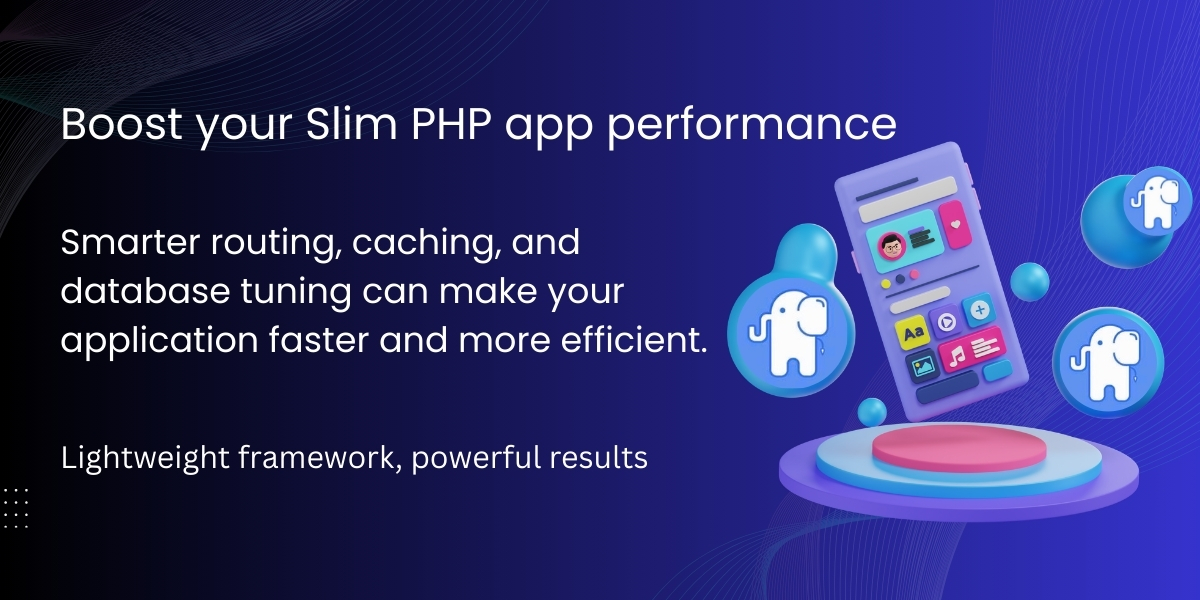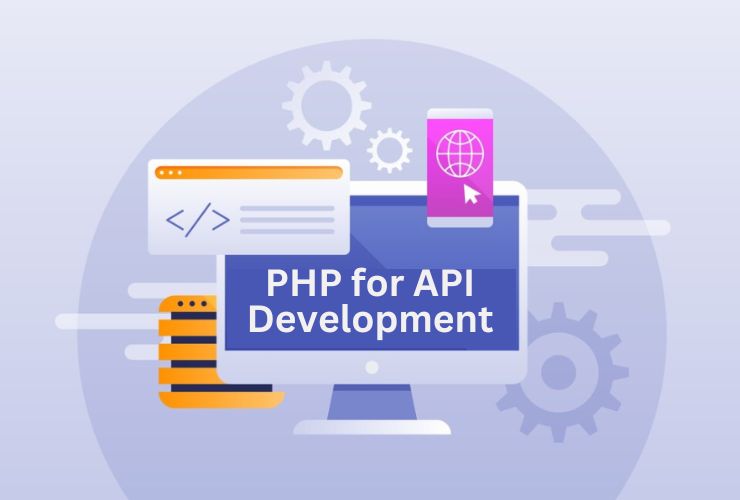It is essential to build fast and responsive web applications to provide an optimal user experience and improve user engagement and SEO. Slim PHP is a lightweight micro-framework that is built around speed and simplicity, but this does not mean it is not necessary to tune performance. Performance optimization strategies and tactics can enhance Slim PHP’s response speed, and most importantly, slow, unresponsive, and inefficient Slim PHP applications can be handled with performance tuning—once again, even under high traffic.
In this article, we will examine optimization techniques and best practices in more detail.
1. Turn on caching to improve response time
Caching is a solid strategy to minimize load time and to have a better performance overall in your applications. Caching will reduce the number of times you query a database and perform computations by saving data that is frequently accessed, which traditionally causes long load times. By implementing route level, data level, or response level caching, your Slim PHP applications will decrease load times and users will receive the content and applications in an expedited manner.
You can cache with various types of caching tools available, like Redis, Memcached, and even file-based caching tools, depending on the overall complexity and scaling needs of your project. For example, we can cache API responses or anything that will not change properties in configuration type data to save valuable time in processing.
More importantly, caching requires a balance; you want to cache enough dollars to get a good response time, but you need to make sure you update or invalidate the caches so your users receive the correct data every time.
2. Optimize Database Queries for Performance
A well-defined database and optimized queries are critical to ensuring quick data retrieval. A poorly designed database or inefficient queries can quickly become a performance bottleneck.
When optimizing database performance, start with reviewing query structures – rather than pulling in entire tables, pull in only what is needed. Implement appropriate indexing of the column being queried, when possible, and this will help to drastically decrease lookup times. You should also practice good query optimization, like utilizing joins wisely, and no over-fetching data from an ORM (Object Relational Mapper).
You can also improve response time in the app by caching query results that are executed with high frequency, reducing the need to continuously access the database. Regular audits of the database or profiling tools for queries would have uncovered the performance issue and taken action before the impacted the end-user.
3. Use Middleware Judiciously
Middleware is a core feature of Slim PHP that allows functionality, such as authentication, logging, and request validation, to be used across multiple routes. That said, there is a possibility that there is too much middleware, or that it is not use effectively causing slow application performance.
The key is to use middleware where necessary. Rather then applying global middleware to every defined route, only apply middleware based on functionality. Keep middleware lightweight, and avoid operation in the middleware that will be resource intense operations, like what you might do with complex data migration, or communicating with an external API.
By keeping middleware focused and efficient, you can reduce the processing time for each HTTP request and ensure smoother performance throughout your application.
4. Utilize PHP OPcache for Improved Performance
OPcache is integrated with PHP and contains performance enhancing capabilities by caching precompiled bytecode in memory. This also means PHP will not need to compile the script for every request, which can greatly increase response time.
When implemented, OPcache will dramatically reduce CPU utilization and memory footprint. For long-running applications, you will want to monitor your cache in order to ensure you are utilizing your memory appropriately. Utilizing OPcache is one of the easiest and most effective ways to achieve better performance with PHP-based applications like Slim PHP.
5. Limit Unused Autoloading and Dependencies.
Slim PHP applications are often developed with the use of Composer to manage packages. While Composer gives you flexibility, it is easy to build up a larger number of autoloading dependencies.
You can optimize your library dependencies usage by removing unused libraries and use classmap optimization on deployment. Include only those packages that are core features of your application. Reducing dependency requirements not only improves performance, but reduces security concerns and maintenance of code.
6. HTTP Compression and Minification
Another method to enhance performance is by lowering the size of assets that need to be sent back and forth between the server and client. HTTP compression, through Gzipping or Brotli, can significantly decrease the amount of data traveling across the network, and ultimately lead to quicker loading times.
Likewise, you can reduce the size of CSS, JavaScript, or HTML files by “minifying” them, a process that removes unnecessary characters and whitespace from the file. This helps decrease size without introducing problems associated with loading the files. Placing and serving static assets from a CDN (Content Delivery Network) is another optimization to provide better performance by serving the content from a geographically closer server.
These optimizations will ultimately help improve page speed, which is important for user retention, and of course, performance in SEO.
7. Routing and Dependency Injection
By optimizing your routing, requests are guaranteed to be processed with little delay. In Slim PHP, routing definitions can be made simpler, and in addition to that, named routes provide a way to avoid unnecessary code lookups for the route.
One other optimization on a related note is making sure that Dependency Injection is optimized, mainly for having it lazy loaded (where the service or object is instantiated only when needed) can minimize some overhead on the service side. Also, while you’re making sure you are not injecting services with a complex chain of dependencies, notice that circular dependencies should especially be avoided because they can generally produce unnecessary overhead as well. Overall, these optimizations will help requests be handled more quickly, and eventually will provide a basis for better scalability of your application over time as the application grows.
8. Performance Monitoring and Profiling
Performance enhancement is not a one-time task – it needs to be a continuous endeavour. Regularly profiling and monitoring Slim PHP applications will allow you to catch bottlenecks or inefficiencies early.
Your observation of inefficient functions, data latency, and memory utilization can be greatly enhanced with the help of tools like Xdebug, Blackfire.io, or New Relic. Being able to track performance data in real-time can make data-driven enhancements to performance more simple and reliable.
As an additional level of detail, using Slim’s error middleware to log details of slow requests, will allow developers to easily catch slow routes and dependencies.
Conclusion
Enhancing the performance of Slim PHP applications is a matter of balancing performance, scale and maintainability. Making quick adjustments for caching, overcoming poor database operation, limiting inconsequential dependencies, and utilizing built-in tools such as OPcache, significantly helps to improve responsiveness in Slim PHP applications.
By fine-tuning and monitoring, performance options will allow your environment to remain stable and responsive to increased user demand. The Slim PHP framework can provide powerful, high performance applications that meet the requirements of the web in a rational and efficient manner. Consistent updating will keep your web applications maintaining their web standard and user experience.










